- Home
- H. R. F. Keating
Murder Must Appetize Page 2
Murder Must Appetize Read online
Page 2
One last desirable attribute this Nicholas Blake debut also had. Its plot was diabolically involved. A whole final chapter was needed after the murderer had been unmasked to unravel it all. I do not think we then positively demanded this sort of complexity, but our authors had to have recourse to it if they were to produce puzzles that would not only defeat us, as in the golden twenties had been the sole object (Ronald Knox once laid it down that the literature should be played like a game of cricket), but would also evoke as the last pages were hurried through the true, admiring ‘Gosh, how fiendishly clever.’
The plot thickens
Take, as another example, the explanation of Greek Tragedy by G.D.H. and Margaret Cole, in that day awesome theoreticians of the Labour movement as well as prolific writers of whodunits that were at least full of recognizeable, if not particularly memorable, people. Provenly unmemorable, I hazard, because Greek Tragedy has in it a cruise-passenger with the odd name of Perronet, and from the subconscious of that obvious detective-story addict Iris Murdoch a quarter of a century later in An Unofficial Rose what should pop up as a character name but Peronett. The nub of the Coles’ plot—and I boil it down more than a little—is that one Aveling, an obnoxious lecturer on the cruise, tells a sixth-former called Arkell that, for no very good reason, he is going overland from Athens to Delphi. Arkell tells Bradfield, a bolshie master from his school who happens to be camping nearby, and Bradfield decides, quite why is not too clear, to kidnap Aveling. He leaves him drugged and unconscious in some bushes, where of course he is found and murdered by a Greek sailor from the cruise ship with whose wife he has, as it so happens, been having an affair. No wonder only the astute (and pretty colourless) Inspector Wilson can get to the bottom of it all.
And no wonder that after the solution is announced a lot of heavy explanation takes place. I suppose we liked this part, and even checked back to see whether the clues had been fairly put. Well, I cannot remember ever doing that myself. Except for one glorious occasion when I actually spotted the really vital one, the fact that in Dorothy Sayers’ Five Red Herrings the colours in an abandoned landscape painting did not correspond with the tubes of oils left with it. The jubilation I experienced was later, when I came to write mystery stories in my turn, to present me with the agonising question of whether what was really wanted was a plot so cunningly judged that the reader, far from losing the cricket match, was subtly presented in the crucial over with a no-ball to swipe satisfyingly to the boundary.
The leisure activity of criminal detection
But, though I was no clue checker, there were certainly plenty of people who were, among them the reader of most of my London Library specimens who splattered the margin at the least suspicion of dicey play and who, lynx-eyed, seemed to miss nothing. The fact was that in those days we had time for such things. There was no television to claim our idle hours, and we were even allowed by public opinion to be idle. Look at all the detectives in these books who had—ah, happy memories—‘a small private fortune’. It was no shame then to have no occupation, to be like so many of the characters in our reading ‘of independent means’, spending one’s life doing no more than being a gentleman, or, for the more raffish like the deplorable Milligan in Murder Must Advertise, in being simply ‘a well-known clubman’, onerous task.
Yet perhaps, after all, really fairly onerous. Lord Peter Wimsey, himself a bit of a clubman, took, we know, infinite pains over every detail of dress, even if assisted by the faithful Bunter, so much so that he is able instantly to recognise from which hatter analmost obliterated topper comes and thus lead the police to the Mr Big of the dope smugglers. Indeed, Leisure bred, in such pursuits as it did allow, an extraordinary thoroughness. And absolute Leisure bred absolute thoroughness—at least if we are to believe Michael Innes in Hamlet, Revenge when he asserts about the traditions of the owners of Scamnum Court that they would prevent the airy Noel from touching a cricket bat or a tennis racket without making a resolute onslaught on county form … would send Elizabeth forward from Somerville next year miraculously perfected in sundry dreary Old and Middle English texts.
And a less awe-inspiring thoroughness worked equally, I think, among the less-exalted leisured classes. It worked, too, among those who provided, often as a hobby like the Coles, Ronald Knox, Michael Innes himself, Cyril Hare the working barrister, and many another, the preferred reading matter of these classes. The plotters worked like stink at their plots, poring over rail timetables (Bradshaw still was) and forensic medicine textbooks, devising whole crossword-puzzles as mere side-issues, agonising over alibis and sweating blood, in a gentlemanly or ladylike way, over getting into or out of comprehensively locked rooms
However, though thoroughness often extended these essentially light-hearted productions to a length that today seems excessive, it was not always enough to get them to the distant target of Page 280 or 300. So the unfortunate authors would give us solemn half-pages of detailed description each time a new character appeared. Or they would embark every now and again on a thousand words or more of purely infilling dialogue. These, seen from today, often reveal the most give-away social niceties. And, of course, we readers then did not dare skip: a clue might be concealed in the chatter. That beginner, Nicholas Blake, complains once of the sheer-length burden by having one of his schoolmasters—they all naturally read detective stories—draw attention to the way in which, so as to fill half a line, heroes invariably ‘carefully selected a cigarette’ although there could be little advantage in taking one Abdulla—remember Abdullas?—rather than the exactly identical Abdulla next to it.
The upstairs and downstairs of old fashioned murder
To give us the leisure in which to unravel the lengthy and careful ravellings we had servants. Or at the least we had—oh, forgotten, marvellous and often doubtless pretty slapdash lady—a cook-general. No chores, sapping away the day’s minutes, for us. No, after dinner or lunch (but not, unless we were depraved, in the morning) we could settle down to a good ’tec, to sheer enjoyment. And naturally in its pages we would find, faithful reflection of contemporary circumstances, servants too.
And, golly, how as readers we looked down on servants. There was, to begin with, an unwritten rule that they should never be the murderer. No, worse than this, it was once at least a written rule, written in America, that great democracy. There, S. S. Van Dine, creator of Philo Vance, super-snob and super-intellectual detective, in an essay under his own name of Willard Huntington Wright (and it’s a nice bonus that two of the rule-givers should be, first, Mr Wright and, second, Mr Wrong—E. M. Wrong, anthologist in 1926 of the Oxford University Press ‘World’s Classics’ Crime and Detection volume) laid it down that having a servant do it was too easy since the murderer would not be ‘a worth-while person’.
In real life, as reflected in these pages, we thought nothing too of pushing servants together into one bedroom, even on occasion fielding a substitute in a temporarily unoccupied bed as in Gladys Mitchell’s Laurels Are Poison. Such bedrooms they were too, as Nicholas Blake put it of one of them ‘resembling in its extreme narrowness and draughtiness nothing so much as a corridor in an express train’. And then when the poor domestics were not of any use, as out of term-time in Gladys Mitchell’s book set in a teachers’ training college, why, we simply put them on board wages till we wanted them again.
But I was discussing the necessary ingredients, though the next item, the police, relates clearly enough to the servants with their invariably comic speech and brainless behaviour (‘The sergeant stared uncomprehendingly’—N. Blake). Indeed, the vicar’s wife in Death Is No Sportsman unblinkingly asks that a constable be told off to fetch her a chair. Often the lower police ranks were the object of a condescension which cannot but raise a pained eyebrow in the last quarter of the twentieth century, like the mention of ‘A Police-Constable who has read Macbeth’ in one list of dramatis personae—these were a frequent feature, somehow comforting if only for recalling characters otherwise unmemora
ble who just might be the murderer.
An inspector palls
Police work as such did not much interest the crime writers of that day. Few cases were solved by anything approaching actual police methods and that thoroughness in mugging up a background seemed never to extend to this activity. Even when a police detective was the triumphing hero his methods were usually hailed as unorthodox. Cyril Hare has a local inspector, ‘essentially a simple-minded man who had risen to his position by hard work’, baffled altogether by ‘a quality of elusiveness and subtlety’ in Inspector Mallett of the Yard. And E. C. R. Lorac (only recently revealed to me as hiding the identity of a woman, Edith Caroline Rivett) makes her Inspector Macdonald a great solver of tricky literary crosswords, even if the solving entails recourse to his customary four-letter word ‘Losh’ as he enjoys his greatest pleasure, sitting in front of a wood fire with a book. Oh, Telly, where art thou? Oh, Permsoc, how far away thou art yet?
Indeed, almost the only truly likely piece of police procedure used was the business of ‘calling in the Yard’, the process which had just taken place when the elusive Inspector Mallett baffled his country cousin. A great crux this always was. A moment of suspense for us readers. Were we to discover that a local man had special attributes which might even make him into a new running hero, like Henry Wade’s Inspector Poole or Christianna Brand’s Inspector Cockrill? Or would the Chief Constable happen to have a friend who would turn out to be our old friend too—Wimsey, Miss Marple, Mr Campion, Doctors Fortune, Fell or Thorndyke, Ronald Knox’s Miles Bredon or one Toby Dyke? Or would the Yard regretfully be summoned and Inspector Mallett (Mary Fitt had one of this name too), or Mitchell (either Josephine Bell’s or E. R. Punshon’s), or French, or Waghorn, or Grant (Josephine Tey’s addition to the crowded ranks of Yard Scotsmen) or Detective Constable Bobby Owen (we were never too sure what rank did what) arrive to take over?
But eventually one way or another the Chief Con stable, Major This or Colonel That, would make up his mind. Unless, as quite often happened, he investigated the affair himself, bringing to it all the explosive military qualities that the fiction writers of that day knew to be the necessary qualifications for this post. They were indeed fairly grossly caricatured figures, these popping and barking military men, though the caricature can be amusing enough even forty years on. We did not, as I have said, demand great subtlety. The sort of characterisation we enjoyed was what Michael Innes, through the person of his detective-story writer Gott, once likened to a big splashy label like ‘Bath Mat’ on that necessary household item as opposed to the unembellished cork of the novel proper.
The late, lamented chapter heading
On a par with liking ‘Bath Mat’ characterisation we liked each chapter in our mysteries to have a title, where possible amusing, and followed by a dazzlingly apt quotation from the classics. Thus Anthony Gilbert, one of the notable women detective writers who continued the energy-filled adventures of her cheerfully vulgar solicitor Arthur Crook until her death in the early 1970s, produced at the heads of chapters in Murder by Experts: ‘A woman doth the mischief brew, In nineteen cases out of twenty’—W. S. Gilbert; ‘Something will come of this; I hope it mayn’t be human gore’—Simon Tappertit (no reader forty years ago needed to be told he was a character in Barnaby Rudge); ‘There is a passion for hunting something deeply implanted in the human breast’—Oliver Twist; ‘Altogether it’s very bad weather, And an unpleasant sort of a night’—Ingoldsby Legends.
For examples of the sort of chapter titles that by oddness and aptness assured us we were on to the right thing I quote from Gladys Mitchell, another of the writers-then who are writers-now, creator of Mrs (later Dame) Beatrice Lestrange Bradley, cacklingly reptilian ‘psychiatric adviser to the Home Office’, a splendidly larger-than-life detective. From Laurels Are Poison we got: ‘Intrusion of Serpents,’ ‘High Jinks With A Tin-opener’, ‘Revenge Upon Goldilocks’, ‘Skirling and Groans, ‘Evidence of the Submerged Tenth’, ‘Iddy Umpty Iddy Umpty Iddy’, and Chapter 15 ‘Rag’, Chapter 16 ‘Bone’. Then there was as well ‘Multiplicity of Promiscuous Vessels’ as heading to a chapter in which chamber-pots played a major part but in which there was not a hint—dear, dead days gone by—of sexual promiscuity. Chamber-pots! What a source of innocent merriment they were in that once upon a time. Yet how many of them are there about today? Central heating, cosseting winter journeys from bed to loo, no doubt exiled thousands and mere change of fashion banished as many more, especially when servants to empty them also disappeared. But the world is a less mildly facetious place without them, and it is one of the nice small pleasures to recall their hilarious charm among the detective stories of yesterday.
Winter of content
And what about that chill outside the bedclothes? I suppose it still exists for some but by and large those squiggly little copper pipes have vanquished it. It is to be met, however, in its full hateful-pleasurable freezingness in these books. Casual references abound to fires—being poked, having to be lit, being let go out. Hot-water bottles too are filled and hugged between cold sheets. But even their comfort is not enough to repel the cold. When a mystery joker strikes in the college where Laurels Are Poison is set, what garments does he (or, as it turns out, she) cut and tear ‘until they were quite beyond repair’? Why, nothing else than two pairs of heavyweight winter pyjamas.
In almost all circumstances in those days we took good care to wrap up well. Even at that college’s dance the girls wore, as a lecturer who expected ‘the silly fatheads’ to catch rheumatism sitting out on the stairs gleefully said, ‘nothing under their frocks except a pair of panties and a bust bodice’. And seldom indeed were any of us parted from our hats—man (‘It requires the utmost strength of will to remain seated, and hatless’— The Case of the Gilded Fly), woman, even as young as twenty-six, (‘In addition to these other discomforts she was wearing a tiresome hat’— Laurels Are Poison) or child (‘Michael Evans, Esq., B.A., has just supervised the boys’ changing … adjured A. not to go out without his hat …’— A Question of Proof). And when in Murder by Experts it was Chapter IV, ‘Altogether it’s very bad weather …’, everybody enveloped themselves in ulsters. From one of which a green button was in due course torn off …
Cold corpses, roast duck and green peas
But if a layer upon layer of clothing failed to ward off that chill there was always food, the so different, stodgy and plentiful middle-class food of the thirties. Inspector Mallett in Death Is No Sportsman, actually investigating a victim apparently dead of sunstroke, polished off first trout, poached from the high-priced stream on the banks of which the murder took place, and then ‘a steaming steak and kidney pudding’.
Mrs Lestrange Bradley delighted the young narrator of Laurels Are Poison with tea consisting of ‘toast, ham, boiled eggs, sardines, new bread, butter, honey and jam’. But I suppose she was lucky to get the new bread since the college bakehouse was used only twice a week, a crux of the mystery this and a fact that produced from the Lynx of the London Library two highly scornful marginal exclamation marks. However, each twice-weekly baking must have been on a massive scale. Bread was eaten at breakfast and tea of course and doubtless too at lunch and dinner. But then came supper, bread-and-butter, cocoa and biscuits.
These huge intakes are exceeded only by the luxurious meals which E. R. Punshon’s young Detective Constable Bobby Owen, of the Yard, works his way through while providing protection for a retired City man. On the night his charge is murdered—here too it is high summer—the pair of them ate ‘sole cooked in Madeira, roast duck served with green peas done in butter, apple tart with cream, followed by coffee obedient to the maxim of the Eastern sage that coffee should be ‘as sweet as love, as black as night, as strong as death, and as hot as hell” ’. How often, as a boy, did I hear that maxim fall from my father’s lips. It takes me back, it takes me back.
The highly incriminating cocktail
No mention of any alcohol before that dinner, but since
for tea—and pause here to note that if ever a character was late for tea you could be sure they had been up to something pretty suspicious—they had already consumed ‘a plate of freshly baked scones of most appetizing appearance’ they almost certainly had knocked back that incarnation-of-the-thirties drink, a cocktail. Though fictional people then seemed less dependent on alcohol than characters in today’s books. When the Chief Constable in Death Is No Sportsman breaks the news to the widow, ‘Afraid this is a terrible shock to you,’ he says, ‘can I get you a glass of water or something?’ But if E. R. Punshon passes over the cocktail before dinner, other authors make ample recompense, often with a pointed older-generation jibe about this ‘disgusting modern habit’ replacing traditional sherry.
At the top of our social scale, which began with prep school masters and only baulked at royalty, the cocktails would be shaken by that oft-recurring figure, the male secretary. And, if he was about, you could do a lot worse than plump for him as the murderer. He had the notable advantage, since he was in a subordinate position, of being neutral in the sympathy stakes while still being a gentleman, necessary qualification for anyone who done it. John Dickson Carr, himself the originator of a plentiful stream of books featuring the Chesterton-like Dr Gideon Fell, found in some 1935 statistical analysis that ‘Secretary’ was the most common occupation of any murderer.
When the cocktails were not being dispensed by the murderous private secretary they were often being tossed off, with terrible bravado, in night-clubs. Bravado because in all likelihood, in the words of Hamlet, Revenge, ‘in the midst of frolic, certain stalwart and hitherto most frolicsome gentlemen disentangle themselves from false noses, paper caps, balloons and streamers, bar the available exits and admit a bevy of uniformed colleagues to count the bottles, sniff at the glasses and take down names and addresses.’

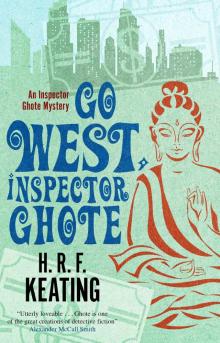 Go West, Inspector Ghote
Go West, Inspector Ghote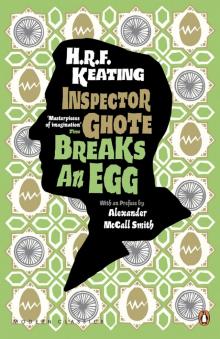 Inspector Ghote Breaks an Egg
Inspector Ghote Breaks an Egg Dead on Time
Dead on Time The Body in the Billiard Room
The Body in the Billiard Room Bribery, Corruption Also
Bribery, Corruption Also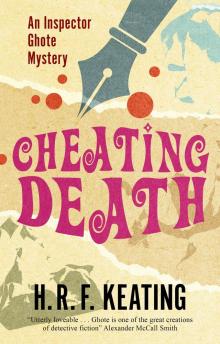 Cheating Death
Cheating Death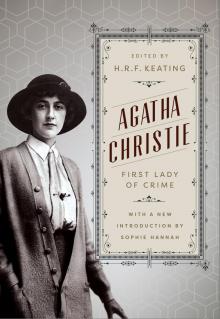 Agatha Christie
Agatha Christie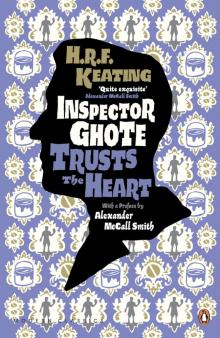 Inspector Ghote Trusts the Heart
Inspector Ghote Trusts the Heart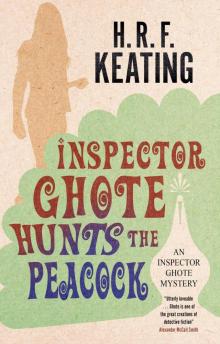 Inspector Ghote Hunts the Peacock
Inspector Ghote Hunts the Peacock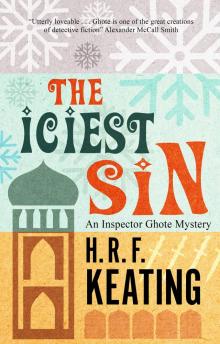 The Iciest Sin
The Iciest Sin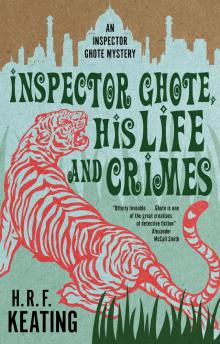 Inspector Ghote, His Life and Crimes
Inspector Ghote, His Life and Crimes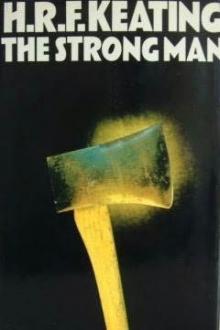 Strong Man
Strong Man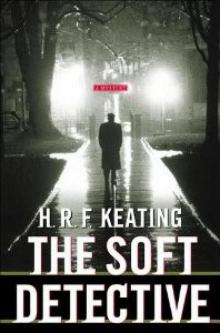 The Soft Detective
The Soft Detective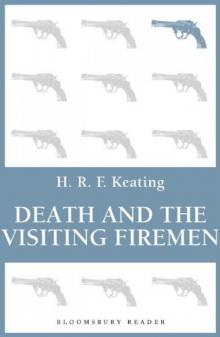 Death and the Visiting Firemen
Death and the Visiting Firemen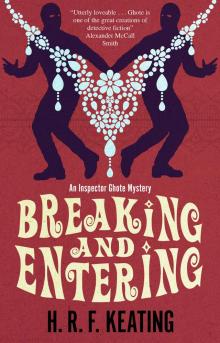 Breaking and Entering
Breaking and Entering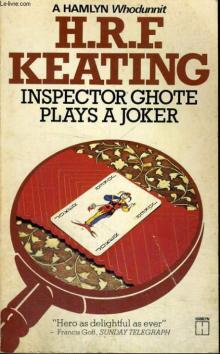 Inspector Ghote Plays a Joker
Inspector Ghote Plays a Joker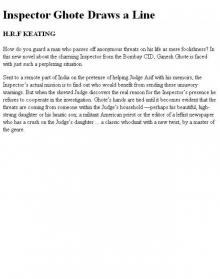 Inspector Ghote Draws a Line
Inspector Ghote Draws a Line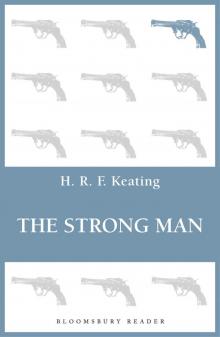 The Strong Man
The Strong Man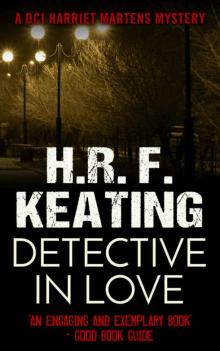 A Detective in Love (A Harriet Martens Thriller Book 2)
A Detective in Love (A Harriet Martens Thriller Book 2)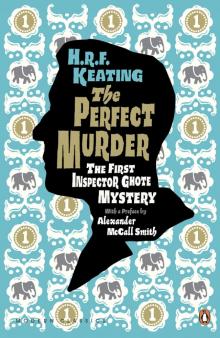 The Perfect Murder: the First Inspector Ghote Mystery
The Perfect Murder: the First Inspector Ghote Mystery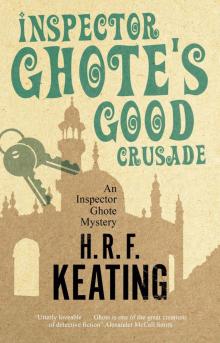 Inspector Ghote's Good Crusade
Inspector Ghote's Good Crusade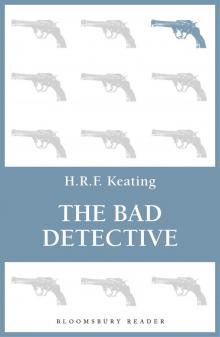 The Bad Detective
The Bad Detective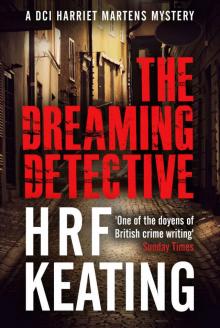 The Dreaming Detective
The Dreaming Detective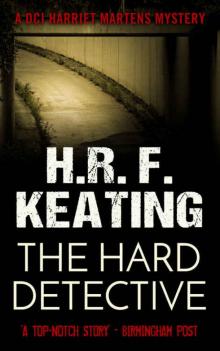 The Hard Detective (A Harriet Martens Thriller Book 1)
The Hard Detective (A Harriet Martens Thriller Book 1) The Dog It Was That Died
The Dog It Was That Died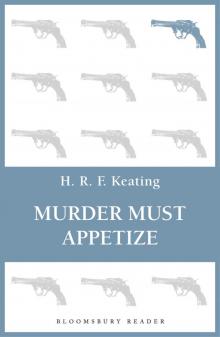 Murder Must Appetize
Murder Must Appetize The Hard Detective
The Hard Detective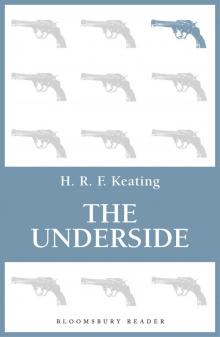 The Underside
The Underside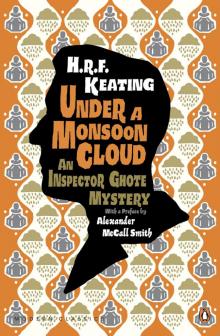 Under a Monsoon Cloud: an Inspector Ghote Mystery
Under a Monsoon Cloud: an Inspector Ghote Mystery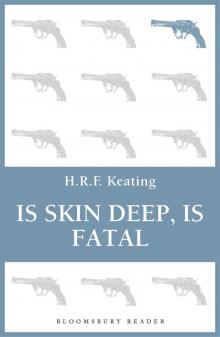 Is Skin Deep, Is Fatal
Is Skin Deep, Is Fatal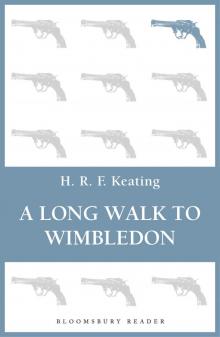 A Long Walk to Wimbledon
A Long Walk to Wimbledon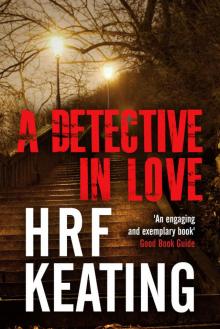 A Detective in Love
A Detective in Love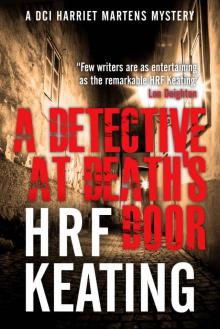 A Detective at Death's Door
A Detective at Death's Door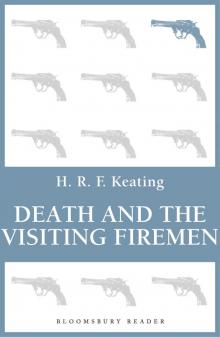 Death and the Visiting Fireman
Death and the Visiting Fireman Zen there was Murder
Zen there was Murder